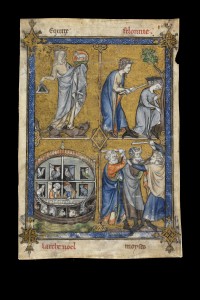X-ray fluorescence (XRF) spectroscopy determines the chemical elements present in the paint layers. It is a very effective tool for the identification of inorganic pigments but it is best used in combination with other spectroscopic methods such as reflectance spectroscopy or Raman spectroscopy. XRF spectra are included in many of the hotspots you can explore on this website.
Most XRF spectra of our manuscripts were collected with an Artax micro X-ray spectrometer (Bruker) with a Rh anode. The X-ray tube was operated either at 50 kV and 600 µA or at 15 kV and 1100 µA with He flush, for better detection of light elements. The measurements lasted 200 s each and were performed with no filters. The measurement spot size was about 0.65 mm in diameter. Images of each of the analysed areas, captured with the instrument’s in-built camera, were also saved.
Some XRF spectra were instead collected with a hand-held Tracer IV-SD spectrometer (Bruker) with a Rh anode. The X-ray tube was operated either at 40 kV and 16 µA or at 15 kV and 55 µA. The measurements lasted 200 s each and were performed with no filters. The measurement spot size in this case was about 5 mm in diameter.








